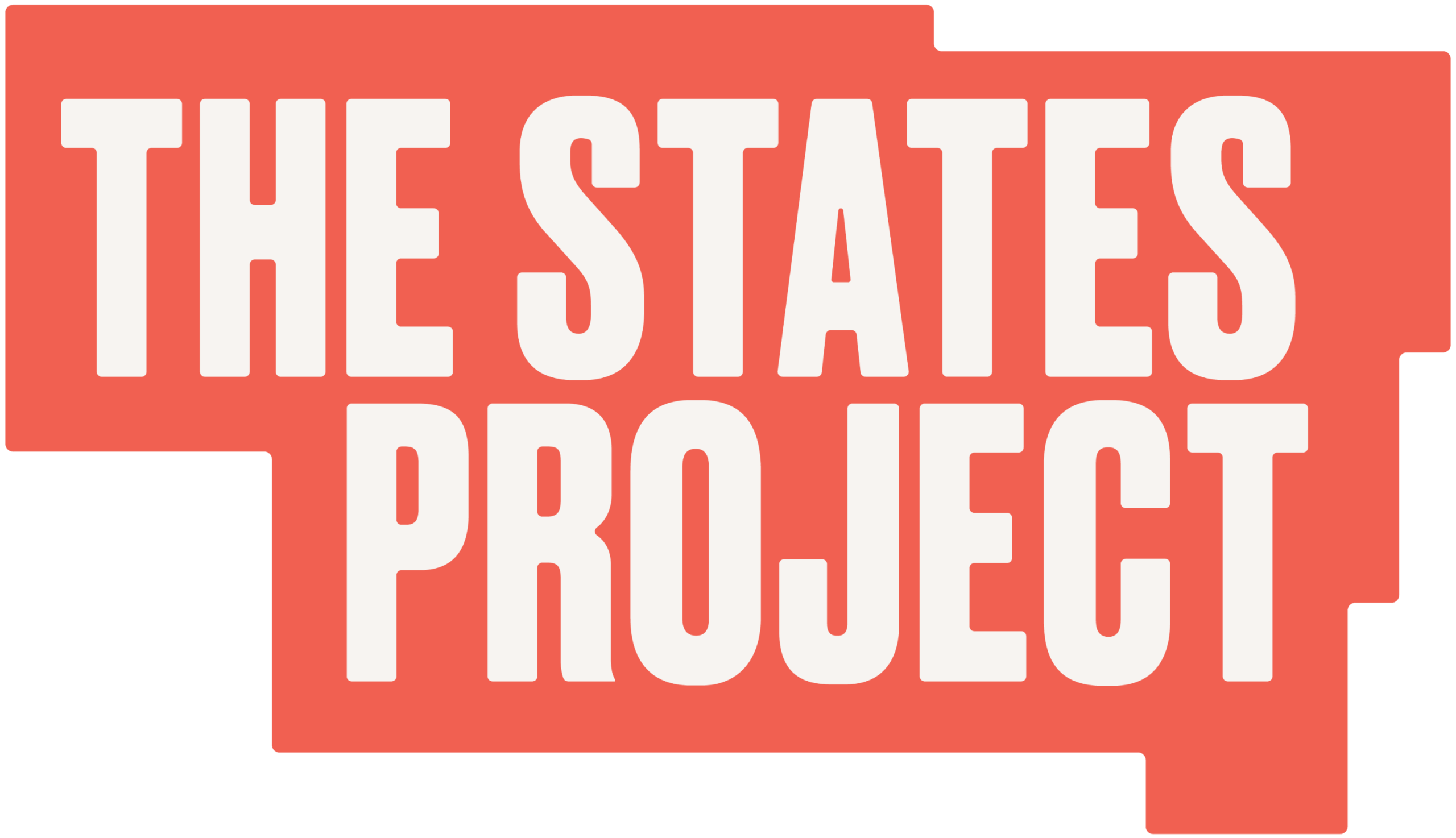
In the 2024 election, Democrats lost not only the presidency, but also the U.S. Senate, the U.S. House,1 and some state legislative power — including losing the majorities in the Michigan House and the Minnesota House (to a tie),2 in addition to losing ground in numerous other chambers, such as Maine3 and Arizona.4 All in all, Democrats lost the popular vote by nearly 1.5% — or approximately 2.3 million votes nationally.5 That’s a 5.9 percentage point swing nationally since 2020.
In sum, Donald Trump’s victory was not a fluke occurrence that can be explained away by a tiny amount of voters in swing states flipping. This was a clear choice by a significant number of voters to swing towards the Republican Party and the authoritarian6 approach of Trump.
Once we accept that a significant portion of the electorate rejected what the Democratic Party was offering, we can also put this loss into some much-needed perspective. This wasn’t a blowout. With persistent inflation keeping the cost of living uncomfortably high for consumers, the incumbent party was always going to be at a disadvantage. Incumbent parties across the world have been losing over the past two years, and usually by significantly larger margins than we saw in the U.S.7
With both of these facts in hand, we can understand that there is no need to overreact. The Democratic Party isn’t finished. Far from it, in fact. Even with no changes between now and the 2026 elections, Democrats are well positioned to make significant gains in Congress and at the state legislative levels. How big those gains are will be informed by how far Trump overreaches in the next two years, and what adjustments the Democratic Party can make between now and then.
2024 was not a tactical failure
One thing is clear: This loss did not occur because of a failure of campaign tactics. While the national popular vote swung by 5.9 points, key swing states where both campaigns focused swung by significantly less. Pennsylvania moved 2.9 points to the right, while Michigan swung by 4.2 points, Wisconsin by 1.5 points, Georgia by 2.5 points, and North Carolina by 1.9 points.8 The exceptions were Arizona and Nevada,9 which both saw a nearly 6 point swing — but those larger shifts can be explained by larger demographic re-alignment trends. (More on that dynamic below.)
The overall picture is quite striking: Where both parties spent significant resources attempting to net votes, Democrats significantly overperformed the national environment. Trump and Harris’ respective efforts were focused on the same set of states, but the rightward shift was significantly lower in those battlegrounds than the country overall. These states have unique geographies and demographics, but the common theme across them is that they were where the presidential campaigns focused their time, energy and resources. It seems clear that the Harris campaign’s tactics were more effective than Trump’s, as this is the most likely explanation for the smaller swing in the battleground states.
2024 was a brand-level failure with working-class voters
Despite employing significantly more effective campaign tactics, Kamala Harris still lost this election by a clear margin. There was something about the Democratic Party brand that put Harris and other Democrats at a significant disadvantage to Trump and the Republican Party. And while I won’t pretend to have all the answers, there are some clear signals within these results.
First, Democrats lost significant ground with working-class voters of all races. For context, less than 40% of the country has a college degree10 — and it is within that 60%+ of the country without a college degree that Donald Trump made most of his gains, according to initial exit polls.11
Non-college-educated voters of every race swung towards Trump, while Republicans made massive gains with every minority group — especially with Latino voters, which Trump only lost by single digits (explaining the larger swing in Arizona and Nevada compared to other swing states).12 These are groups that saw a significantly lower swing based on the education divide than white voters in previous cycles, but showed significant movement this year.13
Lessons from the states: 4 solutions for Democratic deterioration with working-class voters
So why was the Democratic brand so toxic with voters who don’t have college degrees and what can we do about it?
Democrats must address this deterioration if they want to prevent a permanent re-alignment that cements Democrats as the party of educated elites while Republicans become a multi-racial, working-class, authoritarian party.
To determine a winning direction for the future, it is helpful to look to candidates who overperformed this cycle — many of whom did so at the state legislative level. There is a clear trend amongst these candidates: they had a unique brand and were not afraid to repudiate the national party.
Low-information voters — who overwhelmingly voted for Trump — believe Republicans will govern in their interests more than Democrats.14 For Democrats to win decisively up and down the ballot in 2026, 2028 and beyond, they should prioritize the following:
1. Connect with voters in the suburbs who despise extremism from both sides.
The story of the Democrats’ Trump-era successes from 2018-2022 was written in the suburbs — and our gains in these areas are far from maxed out. But serious work will need to continue to make sure Democrats are the natural home for these voters.
2024 results in key state legislative districts show us what that looks like: Even as Democrats lost ground in Arizona, Kevin Volk was able to flip a state House seat in the Tucson suburbs against an extremist Republican, in a district that Harris lost by 4%. He ran ads that focused on working together to solve problems, including securing the border.15 Meanwhile, in North Carolina, Beth Gardner Helfrich flipped a Republican-held seat in the Charlotte suburbs, overperforming Harris by nearly 3.5 percentage points. She ran ads talking about being a mom of 5 kids and a small business owner, directly appealing to suburban voters in her district who could see themselves and their concerns represented in her story.16
2. Turn Republicans’ “culture war” extremism into a political weapon.
One key way that Democrats can do that is by performing political “jujutsu” and using Republicans’ own “culture war” messaging against them in the suburbs. But doing so will require a much simpler, more common sense response than the party has employed in the past: “Don’t be a jerk.”
While Trump’s messaging around Harris “looking out for ‘they/them’” or wanting “men in women’s sports” resonated in some quarters,17 suburban voters largely find politicians demonizing individuals to be distasteful.18 This temperament presents an opportunity for Democrats: First, we must avoid taking highly unpopular stances on social issues that put the party at risk of being seen as extreme in its own right.19 Then, once we have positioned ourselves as a reasonable, mainstream voice, we can credibly call out the meanness within the rightwing’s policies and rhetoric.
Both steps are important — and Democrats will not succeed by doing one and not the other. Unpopular stances on social issues are not just damaging to our electoral prospects, but to the greater cause of equality. In a country where people can still get fired or will soon be at risk of being denied housing because of who they are, it is unacceptable for us to lose elections that would allow us to change those policies because we’re stuck defending ourselves against attacks about sports or transgender care for federal prisoners. Democrats can win in the suburbs by forcing Republicans to answer for why they believe someone should be able to be fired or denied housing based on who they are — but we can’t reap those electoral benefits if we’re unwilling to force the issue because we’re too scared doing so will raise the specter of our own unpopular positions.
3. Elevate practical solutions that will impact voters who have been left behind.
Even as Democrats have an opportunity to build on the party’s growth and momentum in the suburbs, we must also do more to reach into communities that have recently trended the other direction.
In particular, voters who have been most impacted by inflation need to feel that Democrats understand their struggles. Even though it was mostly rhetoric, Trump’s “no taxes on tips” policy contributed to the perception that he was looking out for working class voters more so than the Democratic Party.20 On the other side of the aisle, too many Democrats tried to convince voters the economy was good rather than directly addressing their struggles and presenting solutions.
At the state legislative level, candidates who acknowledged inflation was a problem and presented ideas to help voters did especially well. For example, in Pennsylvania, State Representative Frank Burns overperformed Harris by 34 percentage points while running a TV ad about the rising costs of groceries, and how he worked to cut taxes and lower prescription drug costs.21 State Representative Jim Haddock in Pennsylvania won his district by more than 12%, while Harris lost the district by 7.5%. He ran ads focusing on rising utility and water costs.22
These “pocketbook issues” are having a significant impact on people’s lives. To win back voters’ trust, Democrats have to engage with them directly — not try to convince voters that they’re imagining the hardships they deal with every day.
4. Listen to Latino voters who are leaving the party.
Much has been said about the surge of Latino voters swinging to the right. Given this dynamic, it’s time for Democrats to treat Latino voters like the swing voters they are, not a monolith that can be taken for granted.
That will require not only significant resources far beyond the party’s recent investments in Latino outreach, but also new thinking about our message. Past messaging has tried to pander without any authenticity, and failed to connect.
One thing has been clear: Latino voters don’t want immigration reform that means blanket amnesty or messaging that indicates someone will be soft on crime. Look no further than U.S. Senator-elect Ruben Gallego who ran ads talking about how he would secure the border and reduce crime, while focusing on his working class background, demonstrating credibility and authenticity.
The solution isn’t more policies that feel like handouts. On the contrary, we must broaden our appeals and articulate how Democrats seek to ensure that every American (regardless of who they are or where they come from) has a fair shot at achieving the American Dream — but it’s up to you if you will get there.
There is no single silver bullet that will solve Democrats’ current problems. But as outlined above, we don’t actually need one. We just need to start by listening to the voters, learning from state legislative candidates who saw success even in a tough environment, and making a handful of smart, common sense changes to our strategy and messaging that will position the party to capitalize as the political pendulum begins to swing back in our direction 2026 and beyond.
- https://www.cnn.com/election/2024/results/president ↩︎
- https://boltsmag.org/legislative-elections-2024/ ↩︎
- https://www.mainepublic.org/politics/2024-11-25/legislative-recounts-largely-confirm-election-day-results ↩︎
- https://coppercourier.com/2024/11/20/arizona-legislature-republican-2025/ ↩︎
- https://www.cnn.com/election/2024/results/president ↩︎
- https://www.prri.org/press-release/survey-four-in-ten-americans-are-susceptible-to-authoritarianism-but-most-still-reject-political-violence/ ↩︎
- https://abcnews.go.com/538/democrats-incumbent-parties-lost-elections-world/story?id=115972068 ↩︎
- https://www.axios.com/2024/11/06/swing-state-results-vote-shifts-over-time ↩︎
- See above ↩︎
- https://www.census.gov/newsroom/press-releases/2023/educational-attainment-data.html ↩︎
- https://www.cnn.com/interactive/2024/politics/2020-2016-exit-polls-2024-dg/ ↩︎
- See above ↩︎
- https://www.wsj.com/politics/elections/democrats-college-educated-voters-election-2024-fd0a3917 ↩︎
- https://abcnews.go.com/Politics/voters-trump-candidate-change-exit-poll-analysis/story?id=115614599 ↩︎
- https://host2.adimpact.com/admo/viewer/4e725601-1de6-4591-a6d0-ddada3a3eb09 ↩︎
- https://host2.adimpact.com/admo/viewer/2c97ce0b-5485-4fdd-8d8e-cbf916ea4616 ↩︎
- https://mail.mixmax.com/m/GL5gaH9rVsF78Jn3S ↩︎
- https://www.pewresearch.org/social-trends/2022/06/28/americans-complex-views-on-gender-identity-and-transgender-issues/ ↩︎
- See above ↩︎
- https://www.cnbc.com/2024/11/04/no-taxes-on-tips-president-us-economy.html ↩︎
- https://host2.adimpact.com/admo/viewer/970604a2-cc87-41f2-9e64-0b883bff1c5a ↩︎
- https://host2.adimpact.com/admo/viewer/c2bb337c-39e1-46dc-b5ae-08149d857f70 ↩︎











